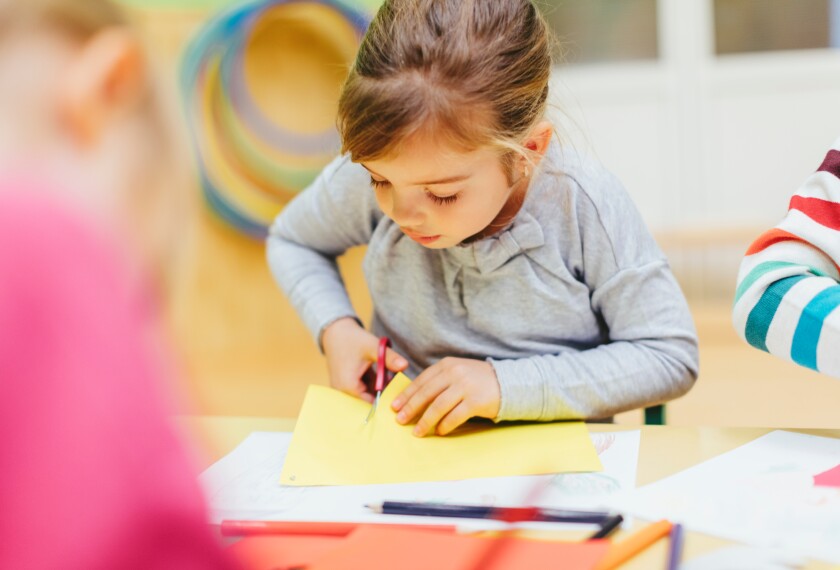Many policymakers tout universal preschool as a strategy for reducing the achievement gap that exists before children begin school, and for preparing all children for the increased academic rigor of kindergarten. Some studies have shown long-term benefits of preschool, but many find that by about 3rd grade, the advantage children who attended preschool had over children who did not has disappeared—the so-called “fade out” effect. Studies that point to fade-out disappoint policymakers who want to see long-term returns on resources devoted to early-childhood education.
Is fade-out inevitable? No. Studies have shown definitively that investment in preschool can yield sustained effects and significant social and economic returns. But fade-out is common and remains a persistent reminder that simply providing preschool to low-income children is not sufficient to achieve long-term benefits.

If we want to sustain the effects of preschool, we need to look at what happens after children enter school. Clearly, the quality of schooling they receive in the early elementary grades matters. Poor instruction can undo the effects of high-quality preschool experiences. But instruction has to be more than good to sustain preschool effects; it has to build strategically on the gains made in preschool. Currently, instruction in the early elementary grades is typically not well aligned with—and therefore does not make effective use of—the advantages high-quality preschool confers. Recent analyses of national data by Vanderbilt University’s Mimi Engel and her colleagues, for example, indicate that much of the math instruction children receive in kindergarten repeats material they have already mastered before entering kindergarten. Repetition gives the children who did not have the benefit of preschool an opportunity to catch up, but it does not build on the gains children made in preschool, and thus does not make good on the preschool investment.
To sustain the gains of preschool, kindergarten teachers need to know the kinds of skills children bring to their class. They must then adjust their curriculum and instructional plan to move each child to the next step in his or her learning trajectory. This requires careful assessments of students’ skills at the beginning of the academic year and support for teachers to help them understand the implications of those assessments for their teaching. The former is increasingly common; the latter is just as important, but rare.
Implementing a continuous, if not uniform, curriculum in preschool and the early elementary grades can help. But even a consistent curriculum does not guarantee that children will experience a seamless transition in which new instruction builds on what they previously learned.
Bad instruction can undo the effects of high-quality preschool experiences.
Learning scientists have also shown that learning is sustained and deepened when students make connections between constructs and topics and when they are given opportunities to apply their skills in novel contexts. To do this, teachers need to know what children learned in the previous grade and in what context.
Opportunities for sustaining the social-emotional benefits of preschool are also often lost and thus contribute to fade-out. The social dimension of children’s development is typically emphasized in preschool, but because K-12 accountability systems in most states do not currently include social-emotional skills, these skills are not given much attention beyond preschool. As a consequence, elementary school teachers do not take advantage of and build on the social-emotional gains made in high-quality preschool. These skills are not just important for relationships with peers and teachers; they also play a central role in learning. Impulse control, for example, is highly correlated with academic skills. A failure to build on the progress in self-regulation and other social skills made in preschool is a missed opportunity to maximize student learning in the early elementary grades.
In addition to curricular continuity, continuity in parent involvement can affect children’s learning. Parents play a significant role in the preschool programs that have produced the best-documented sustained effects on children, such as the Abecedarian Project in North Carolina, the Perry Preschool Project, and the Child-Parent Centers in Chicago. These programs encouraged parents to be involved in their children’s education and they gave parents instruction and tools to do so. Most elementary schools invest much less in parents. As a result, parent involvement, which is known to have considerable impact on children’s learning, is not sustained. Again, an important benefit of quality preschool is lost.
Schools often make efforts to ease the transition from preschool to kindergarten, but those efforts typically focus on readying parents and children for change, not on making adjustments in kindergarten to capitalize on the gains children made in preschool.
There are concrete steps policymakers and elementary school administrators can take to ensure the long-term benefits of children’s preschool experience: They should align the assessments given in preschool and the early elementary grades to track children’s progress on learning trajectories across the grades. At the school level, they should give teachers time and opportunities to become familiar with expectations and content in the preceding and subsequent grades. They should also give teachers opportunities to learn how to adjust instruction for children who enter with varying levels of skills so that all children, at whatever level, can move on to the next level.
There are many ways to help sustain the effects of preschool, including ensuring high-quality programs and offering other supports that children and families need for children to perform well in school. But if we want our investment in preschool to pay off, we cannot ignore what comes after. We need to make sure that what follows preschool takes good advantage of the gains achieved.




